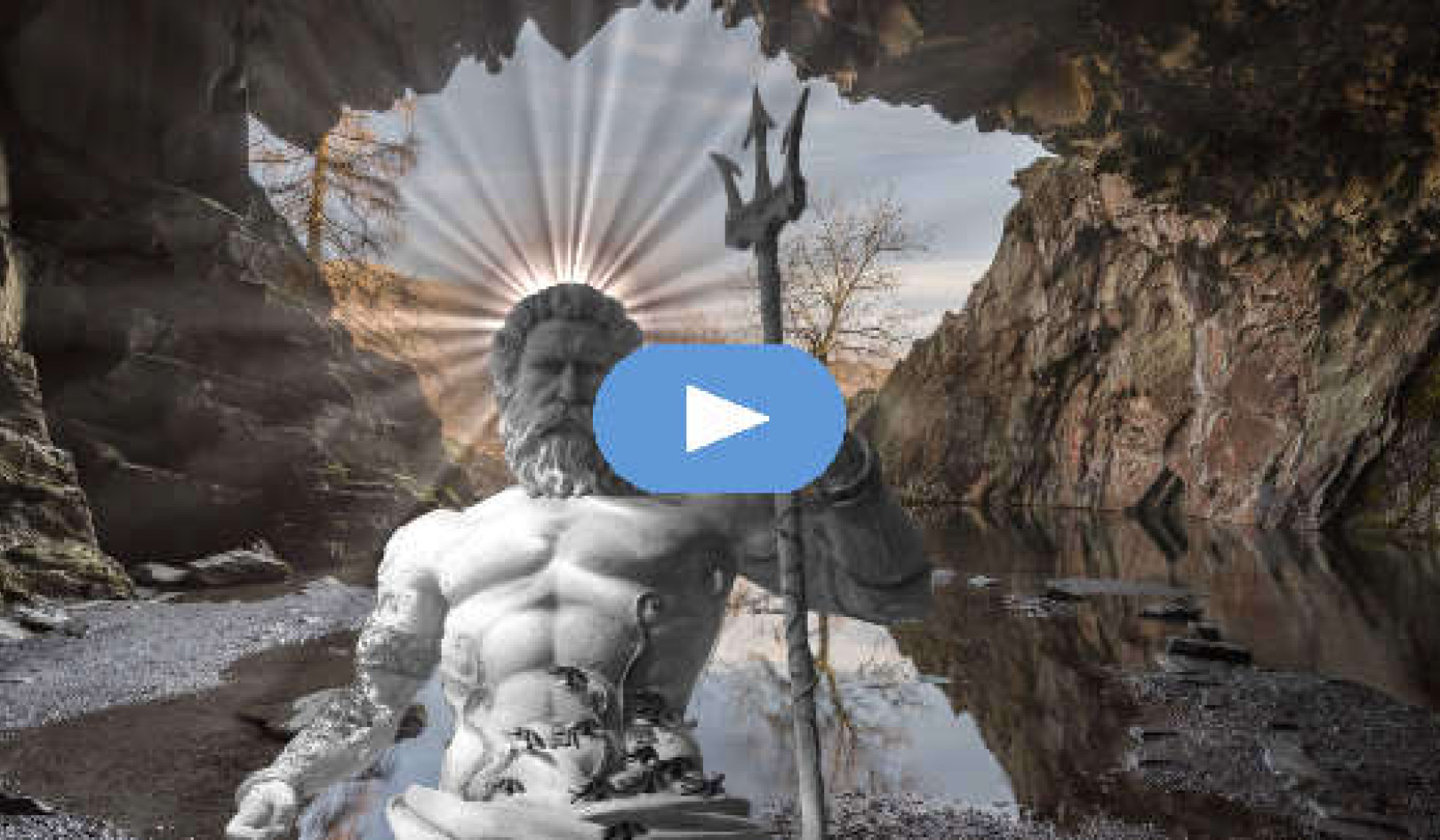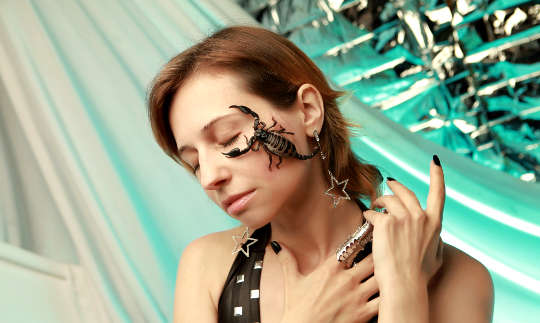
Image by Victoria Model
When I was nine years old, my mother, sister, and I visited one of my mother’s friends who had several cats. We stayed the night and in the early morning, while everyone was still in bed, I went downstairs to get some milk. In front of the refrigerator, blocking the door, sat the eldest cat. She was dark gray with bright green eyes, and she looked at me in a very deliberate way. As my skin begin to prickle, a cold fear rose from my belly. I sensed the cat knew something about me, perhaps something that I didn’t know or couldn’t know, and found me wanting.
The rest is a blur: a sudden movement, a scream. I recall my feet pounding up the stairs, the cat at my heels. I remember racing through the open door to my mother’s room, jumping on her bed, still screaming all the while.
The cat never touched me, but an indelible impression of her remains. It is my first memory of meeting a shadow animal, face to green-eyed face.
While I didn’t have the concept at nine years old to define this as an encounter with the Shadow, future events would reveal it was so. I did not develop a fear or hatred of cats because of the incident, nor did I think that cats were out to get me; in fact, my general opinion of cats did not seem to change.
My body, however, had a very different opinion. Soon after the event, I developed an allergy to cats. My eyes became red and itchy, my nose stuffy, my skin prickly whenever I came near a cat. If I wanted to pet one, I had to immediately wash my hands and face. Eventually I found it easier to stay away from cats.
Dreams and Messages from the Subconscious World
It wasn’t until several decades later that I met the cat again—this time in my dreams. The cat appeared many times over the years, always in different settings: sitting on a table, lounging in a chair, perched atop a refrigerator. The cat was silent, watching me.
By this time I was fascinated with dreams and the messages they share from our subconscious world. The dreams nudged me to revisit my earlier experience. What was it that made me run from the cat? Did the cat truly see something within me—and if so, what? Was my body defending me from a perceived threat by developing an allergy to keep me away from cats? Was there a reason cats were never my favorite animal, even before the incident? What is it that Cat represents for me?
I now know Cat as a skilled guide and mentor. The cat—both the physical cat and the dream cat—did indeed know something about me, something I had hidden away a very long time ago. Wise and patient, Cat was watching me carefully, waiting until I was ripe for its teaching.
What is the Shadow?
In psychological terms, ‘Shadow’ refers to the hidden aspects of our personality that we prefer not to identify with: shame or guilt, greed or arrogance, weakness or incompetence. Because we don’t want to see ego-deflating aspects of self, we keep them in the dark, tucked away in the deep psyche.
The Shadow holds all those parts of the self that we judge or disown—our secret fears, suppressed emotions, hidden prejudices, and dark beliefs. We each have our own Shadow and each family, society, and nation has its collective Shadow as well.
It’s ironic—and yet fitting—that just as much as we ignore or refuse to know our Shadow, so the Shadow yearns to be known by us. It seeks to be seen, craving our acknowledgement of its existence—for it, too, is who we are.
The more we repress the Shadow, the more it works to make us aware of itself. It sometimes sneaks out in unsuspecting ways. Shadow images may appear in our dreams and daydreams or push their way into daily life via events and encounters that leave us feeling unbalanced and upset.
We may also glimpse our Shadow in the attributes that we project onto others. Instead of acknowledging qualities we do not like in ourselves, we subconsciously fling them outward—onto friends and family, politicians and the government, other races, and other countries. We also routinely do this to animals. Thus snakes are evil, spiders and bats creepy, rats dirty, and cockroaches downright disgusting.
Shadow Animals as Teachers
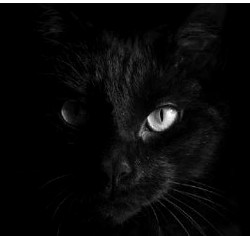 Humans have a long history of connecting with the animal world. Ancient peoples often identified animals as their ancestors, and many early gods and goddesses were represented in animal form. Some humans journeyed with spirit animals while others learned healing secrets and new perspectives from observing animals in the wild. Animals offered us protection, advice, inspiration, and wisdom.
Humans have a long history of connecting with the animal world. Ancient peoples often identified animals as their ancestors, and many early gods and goddesses were represented in animal form. Some humans journeyed with spirit animals while others learned healing secrets and new perspectives from observing animals in the wild. Animals offered us protection, advice, inspiration, and wisdom.
Shadow animals are unique teachers that can help us find and better understand the lost and wounded pieces of ourselves of which we are not fully aware. Some hold clues to repressed memories of trauma or abuse. Some are guides, helping us to explore the puzzling or guarded aspects of our psyche.
Shadow animals may appear frightening at first, for they may reflect those aspects of self that we most fear knowing. But it is by exploring the Shadow that we can eventually face our fears and find—within those fears—our strengths, abilities, and wisdom. Shadow animals can help us discover and embrace what we have judged, forgotten, or marginalized.
It’s important to remember that no animal is a shadow animal in itself. Rather, we make it that way. Events conspire to help create the perfect conditions for us to see our Shadow in an animal. Thus a perfectly nice, gray, green-eyed cat triggers a reaction that stays with us for decades.
Said another way, shadow animals are only shadow in relation to ourselves. They are the handy surface onto which we project our inner Shadow. Rats are not dirty. Snakes are not evil. It is only we who believe they are.
By showing us the outer shape of our Shadow, shadow animals offer clues to that which obstructs the inner radiance of our light. Their great gift is in helping us to see what we have hidden within.
The Shadow Animal's Invitation
Whenever a shadow animal shows up in our life, we are offered an invitation to explore a deeper side of ourselves. Accepting the invitation involves some courage, for we may be facing parts of ourselves that are scary, uncomfortable, or unflattering. And yet, this is precisely what leads us to our gold.
We may initially feel less than thrilled with the shadow animal that comes to us offering insight or advice. Let’s say it’s Rat. Oh no! Rats are dirty, nasty hoarders with beady eyes and bald tails; what can this creepy animal possibly have to show me? What can I learn from Rat?
Remember, we create shadow animals by pushing all the things we do not like about ourselves out there, onto others, like rats. We tend to marginalize that which we disown. Thus we dismiss the idea that rats have skills, or we belittle others by calling them dirty rats. That’s our projection—and projection is always much more about ourselves than anything else.
Accepting an invitation from a shadow animal involves committing ourselves to deeper exploration. It requires engaging curiosity and an open mind as we earnestly consider what the animal presents to us. Once we allow ourselves to investigate, we might begin to see what’s actually there.
What Is It About Rats?
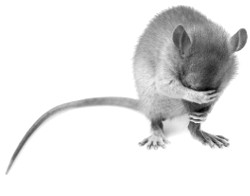 Maybe we do a little research about Rat. Perhaps we are surprised to learn that rats are very clean and clever. In fact, rats are not only intelligent, but strong and strategic survivors. And so we ask ourselves again—this time with budding curiosity—What can I learn from Rat?
Maybe we do a little research about Rat. Perhaps we are surprised to learn that rats are very clean and clever. In fact, rats are not only intelligent, but strong and strategic survivors. And so we ask ourselves again—this time with budding curiosity—What can I learn from Rat?
If we are humble enough to ponder Rat, we may be surprised at the insights Rat and the rodent kingdom have to share! That’s why it is wise to stay the course; to observe carefully, without judgment; to trust that the animal that shows up is the one we need. As we open to Rat’s teaching, we may be pleased at how perfectly appropriate and helpful its presence can be.
Let’s say we’re stuck in a situation that never seems to resolve. We’ve tried to handle it various ways but nothing seems to work. Enter Rat. Maybe we dream about a rat or see a rat in the wild or on television. It gets us to thinking how rats are good with mazes, and how they can squeeze their way in and out of tight places. Perhaps we can learn something from Rat after all.
Why Do We Fear Shadow Animals?
If we want to see what is, rather than what we want to see or fear, then it’s wise to let go of expectations and rigid ideas of how we think things should be. Instead of holding firm to old beliefs or stereotypical prejudices about Rat, we open our mind to learn more about this animal. And thus we may discover that the situation we thought we were stuck in begins to open as well.
While on the surface of consciousness we may think we don’t like rats or snakes or spiders, deep down there’s something else going on. We fear shadow animals for the unattractive truths they show us about ourselves. Animals that have toxins or venom, for example, may help us see our own toxic nature—ways we manipulate or sting others to get what we want.
It is easier to project dislikes onto an animal than to accept what it reveals about us. And that’s exactly why shadow teachers can be so valuable in helping us to find our true self.
Working with Shadow Animals
Working with shadow animals involves paying attention to our thoughts and feelings. It takes time and requires self-honesty. After all, we’re working to find what we don’t know or cannot see clearly about ourselves. We’ll need to explore what we deny, suppress, judge, repress, ignore, and disown. We may need to reconcile long-forgotten aspects of ourselves that are barely recognizable now. It can be a challenging, ongoing process.
Forming a meaningful relationship with shadow animal teachers depends upon our ability to form a deep, honest relationship with ourselves. As representatives of our dark side, shadow animals want to be acknowledged. They come to us so that we can see our strengths and weaknesses more clearly. By working with them we engage more of ourselves, each lesson a stepping-stone to greater confidence, authenticity, and awareness.
Once we embrace our shadow animal, it often becomes a powerful guide, a trusted ally in our adventures through both everyday life and our private dreamscape. The very act of acknowledging our shadow animal propels us forward, onto a pathway that leads to clarity and enlightenment.
Copyright 2022. All Rights Reserved.
Printed with permission.
Article Source
BOOK: Shadow Animals
Shadow Animals: How Animals We Fear Can Help Us Heal, Transform, and Enlighten
by Dawn Baumann Brunke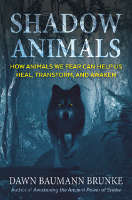 Presenting an animal-centered guide to shadow work, Dawn Baumann Brunke reveals how shadow animals protect and advise, challenge and encourage, inspire and offer support to the spiritual adventure of enlightenment as we awaken to who we really are.
Presenting an animal-centered guide to shadow work, Dawn Baumann Brunke reveals how shadow animals protect and advise, challenge and encourage, inspire and offer support to the spiritual adventure of enlightenment as we awaken to who we really are.
The animals we fear or dislike can help us to recognize our Shadow: the hated, abandoned, judged, and denied aspects of ourselves. The author explores the lessons of numerous shadow animals, including those that many think of as shadowy, such as snakes and bats, as well as those that only seem shadowy to some, such as dogs, cats, birds, and horses.
For more info and/or to order this book, click here. Also available as a Kindle edition.
About the Author
 Dawn Baumann Brunke is a writer and editor who specializes in the areas of healing, dreaming, spirituality, animal communication, and deepening our connection with all life.
Dawn Baumann Brunke is a writer and editor who specializes in the areas of healing, dreaming, spirituality, animal communication, and deepening our connection with all life.
The author of Animal Voices: Telepathic Communication in the Web of Life, Shapeshifting with Our Animal Companions, and Animal Voices, Animal Guides, she lives with her husband, daughter, and animal friends in Alaska.
Visit her web site at www.animalvoices.net.























